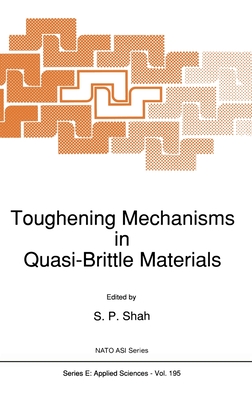You are here
Back to topToughening Mechanisms in Quasi-Brittle Materials (Topics in Molecular Organization and Engineering #195) (Hardcover)
$128.70
Usually Ships in 1-5 Days
Description
Session 1: Fracture of Ceramics with Process Zone.- Fracture Properties of SiC-Based Particulate Composites.- Crack Bridging Processes in Toughened Ceramics.- Fracture Process Zone in Concrete and Ceramics - A Matter of Scaling.- Report on Session 1: Fracture of Ceramics with Process Zone.- Session 2: Fracture in Concrete and Rock.- Microcracking and Damage in Concrete.- Cracking, Damage and Fracture in Stressed Rock: A Holistic Approach.- Test Methods for Determining Mode I Fracture Toughness of Concrete.- Report on Session 2: Fracture in Concrete and Rock.- Session 3: Theoretical Fracture Mechanics Considerations.- Rate Effect, Size Effect and Nonlocal Concepts for Fracture of Concrete and Other Quasi-Brittle Materials.- Micromechanics of Deformation in Rocks.- Asymptotic Analysis of Cohesive Cracks and its Relation with Effective Elastic Cracks.- Reporter's Summary: Session 3, Theoretical Fracture Mechanics Considerations.- Session 4: Experimental Observations.- Microstructure, Toughness Curves and Mechanical Properties of Alumina Ceramics.- Creep Damage Mechanisms in Hot-Pressed Alumina.- Study of the Fracture Process in Mortar with Laser Holographic Measurements.- Reporter's Comments on Session 4 - Experimental Observations.- Session 5: Experimental Methods to Assess Damage.- The Fracture Process Zone in Concrete.- Characterization of the Fracture Behavior of Ceramics Through Analysis of Crack Propagation Studies.- A Review of Experimental Methods to Assess Damage During Fracture of Rock, Concrete and Reinforced Composites.- Similarities Between Fracture Processes in Concrete, Rock and Ceramics: Recorders Report to Session 5 'Experimental Methods to Assess Damage.- Session 6: Theoretical Micromechanics Based Models.- A Review of Some Theories of Toughening Mechanisms in Quasi-Brittle Materials.- On the Form of Micromechanical Models of the Brittle Deformation of Solids.- On the Relationship Between Fracturing of A Microcracking Solid and its Effective Elastic Constants.- Report of Session 6: Theoretical Micromechanics Based Models.- Session 7: Fracture Process in Fiber Reinforced Ceramics.- Determination of Fiber-Matrix Interfacial Properties of Importance to Ceramic Composite Toughening.- Quasi-Ductile Behaviour of Carbon-Reinforced Carbon.- The Fracture Resistance and Brittle Matrix Composites.- Session 7 Discussion.- Session 8: Fracture Toughness of Fiber-Reinforced Cement Composites.- Research Challenges in Toughness Development of Fiber Reinforced Cementitious Composites.- Failure Characterisation of Fibre-Reinforced Cement Composites with R-Curve Characteristics.- Characterization of Interfacial Bond in FRC Materials.- Summary of Session 8: Fracture Toughness of Fiber-Reinforced Cement Composites.- Session 9: Strain Rate, Thermal, Time and Fatigue Effects.- Growth of Discrete Cracks in Concrete under Fatigue Loading.- Creep and Creep Rupture of Structural Ceramics.- Fracture of Concrete at High Strain-Rate.- Summary of Session 9: Strain Rate, Thermal, Time, and Fatigue Effects.- Author Index.
